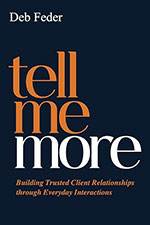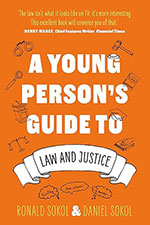 VERDICT: It’s a Keeper
VERDICT: It’s a Keeper
The Insect Epiphany: How Our Six-Legged Allies Shaped Human Culture
By Barrett Klein (New York, NY: Timber Press, 2024). 354 pgs. $35. Order, amazon.com.
Reviewed by James Davies
Imagine yourself at a farm-to-table dinner in September. You’ve arrived before most of the other guests, and the host is busy inside the nearby farmhouse with preparations. The sun is lower in the sky, highlighting the fields and groves of trees around you with a golden glow. There is barely a breeze, and various insect sounds fill the air around you.
A tall, slender man with angular features approaches you and begins to explain how insects have contributed to the creation of so many elements of human existence. He starts by pointing out your silk tie, then draws your attention to the beeswax candles the host has started placing on the table and continues by pointing out that the violins in the string quartet drifting from the nearby farmhouse likely use shellac from the lac insect (Kerria lacca). He never goes too deep into any one subject, rather suggesting other sources if you are interested in learning more.
Want to Review a Book?
Please request a book and writing guidelines from the Wisconsin Lawyer managing editor at wislawmag@wisbar.org. Reviewers may keep the book reviewed. Reviews of about 500 words are due within 45 days of receiving the book. Reviews are published, space permitting, in the order received and may be edited for length and clarity.
The conversation dances across the surface, like a common water strider (Aquarius remigis), from the groundbreaking stop-motion animated beetle films of Polish-Russian animator Ladislas Starewitch, to the role ballet dancer Milena Sidorova played in bringing Baron Vladimir Harkonnen’s pet humanoid spider to life in the film Dune (2021). Your conversational companion never dwells too long before moving on. This is very much the feeling of reading The Insect Epiphany.
The author, Barrett Klein, is a biology professor at U.W.-La Crosse, specializing in insect behavior, sleep biology, and the interplay between humans and insects throughout history.
From a lawyer’s perspective, the most intriguing part of the book is the beginning of the third section, which covers situations in which humans mimic insects. Klein opens this section by exploring what humans could learn about organization from insects, though he concludes that the lessons depend more on the observer than the insect.
Generally, I enjoy insects and am more curious than fearful of them. However, earwigs have always been an exception. TheInsect Epiphany challenged this bias by revealing that earwigs have wings that unfold to 10 times their packed size and lock into place without muscle power. This self-folding ability surpasses current human engineering and could inspire advancements in folding technology for items ranging from tents to satellites. Klein does not shy away from the effects the human-caused biodiversity is having on insects; however, he closes the book on a hopeful note.
The book is accessible; no prior entomological knowledge is required to appreciate Klein’s stories, anecdotes, and explorations. Additionally, the book is brimming with pictures, including stunning full-page illustrations by Elizabeth Jean Younce at the start of each section. I’d recommend The Insect Epiphany to anyone interested in learning more about how much human culture owes to insects, in taking a break from reading convoluted statutes, or in getting a beautiful coffee table book.
James Davies, Univ. of Florida 2012, is assistant corporation counsel for Milwaukee County.
 VERDICT: It’s a Keeper
VERDICT: It’s a Keeper
Tell Me More: Building Trusted Client Relationships through Everyday Interactions
By Deb Feder (Toronto, Canada: Grammar Factory Publishing, 2024).168 pgs. $19.95. Order, amazon.com.
Reviewed by Jessica M. Moeller
Working to engage in client-centered communication and build core relationships can sometimes be a challenging skill to teach (as a professor) and to build (as a practitioner.) Through her book, Tell Me More, Deb Feder takes an excellent opportunity to ground our practice as people and remind attorneys of one of the simpler tasks we can work on, perhaps despite nerves or busy schedules: engaging with our clients (and our colleagues) through every interaction available.
This book is an easy read, with only 167 pages broken down into three main focal points: building good habits, looking at our conversations themselves, and analyzing our choices. This also includes a 10-page preface and a five-page wrap-up. As the book begins, more attention is paid to building out client lists and building a book of business. This seems to veer a bit from the book’s core concept, client communication, which might be why it starts off as a slow read. However, once into subsequent chapters, the book not only takes readers through key communication skills but also provides action plans and examples of how to better communicate.
What truly makes this a keeper for me, especially as a professor of legal skills and communication, is that the author provides multiple activities and opportunities for readers to pause and practice a skill or to challenge themselves to improve upon one of the skills in the book. This truly engages readers and makes this book an invaluable tool for any new or experienced lawyer or law student looking to improve upon their client – and colleague – interactions.
Jessica M. Moeller, U.W. 2012, is an assistant dean of experiential learning at the Charleston School of Law. She practiced primarily in Wisconsin in indigent defense, mental health and elder rights advocacy, and juvenile justice. She serves on the State Bar of Wisconsin’s Civil Rights and Liberties Section board and on South Carolinians for Alternatives to the Death Penalty.
 VERDICT: Touchdown!
VERDICT: Touchdown!
A Young Person’s Guide to Law and Justice
By Ronald Sokol & Daniel Sokol (Leicestershire, UK: The Book Guild Ltd., 2024). 124 pgs. $6.99. Order, amazon.com.
Reviewed by Beth R. Pless
Readable, relatable, relevant. A Young Person’s Guide to Law and Justice uses an engaging conversational writing style to explain various aspects of the law to its target audience of adolescent readers. Its 94 pages provide explanations of various topics including the language of law and how laws are created and interpreted and refer to real-life examples, situations, and experiences commonly occurring in readers’ everyday lives. Comparisons between legal systems in the United States, the United Kingdom, and other countries round out the discussion.
Each chapter ends with discussion questions designed to engage readers in reflection, and sometimes critical thinking, regarding the material presented. Also included is a list of suggested reading materials for those wishing to learn more about the history and application of the law, as well as excerpts from classic legal texts such as the Magna Carta, the French Declaration of the Rights of Man, the U.S. Constitution, and the European Convention on Human Rights. As stated by Henry Mance in the foreword, “The law isn’t what it looks like on TV; it’s more interesting. This excellent book will convince you of that.”
Beth R. Pless, U.W. 1992, is program co-director of Northeast Wisconsin Technical College’s ABA-approved Legal Studies and Paralegal Program.
» Cite this article: 98 Wis. Law. 44-45 (April 2025).
